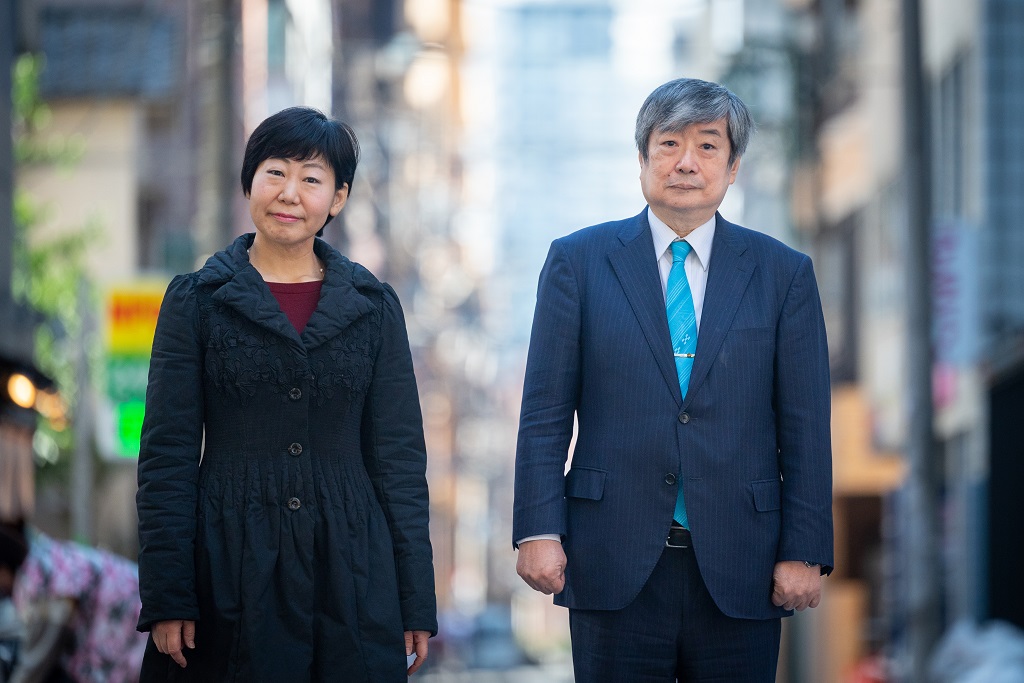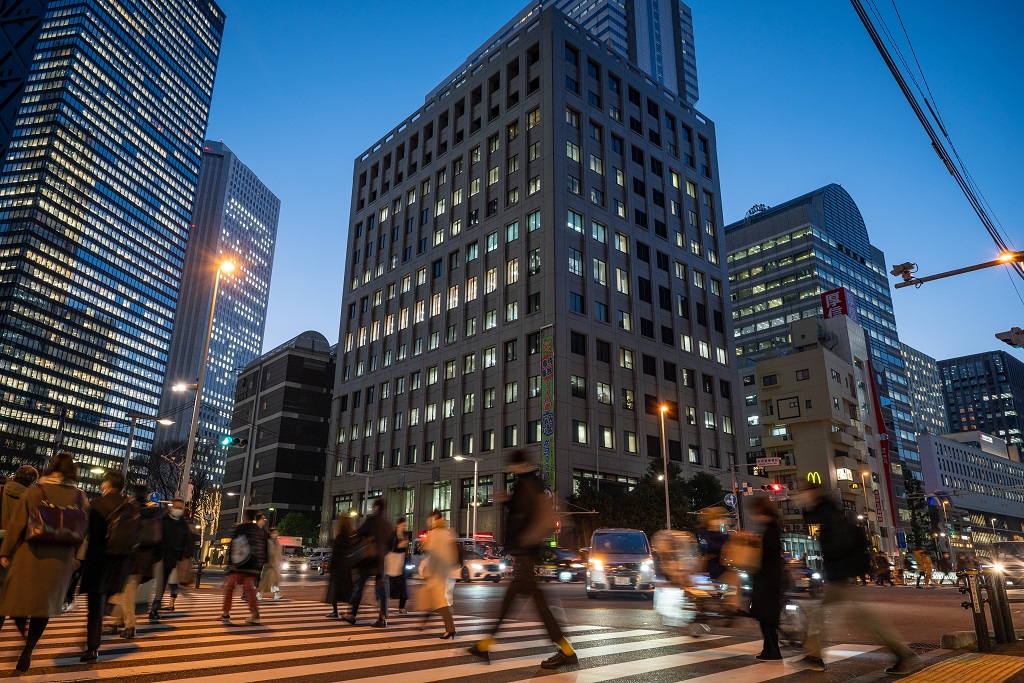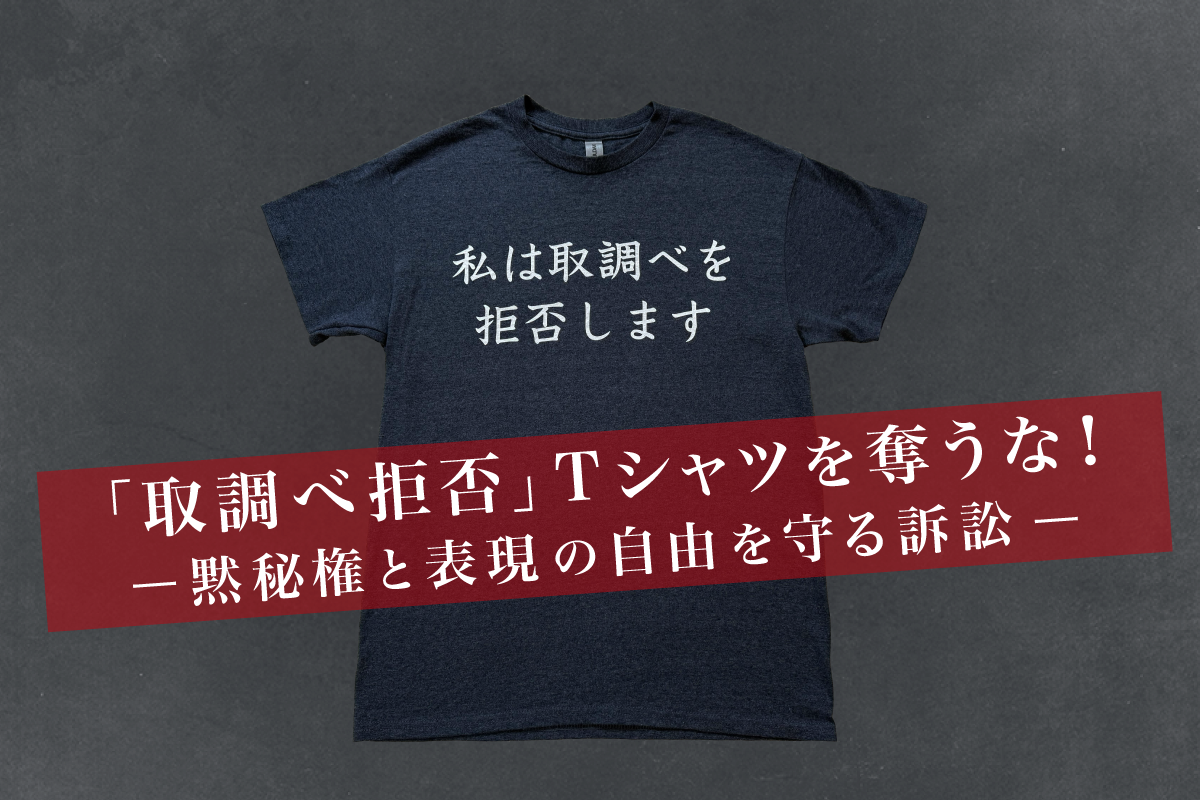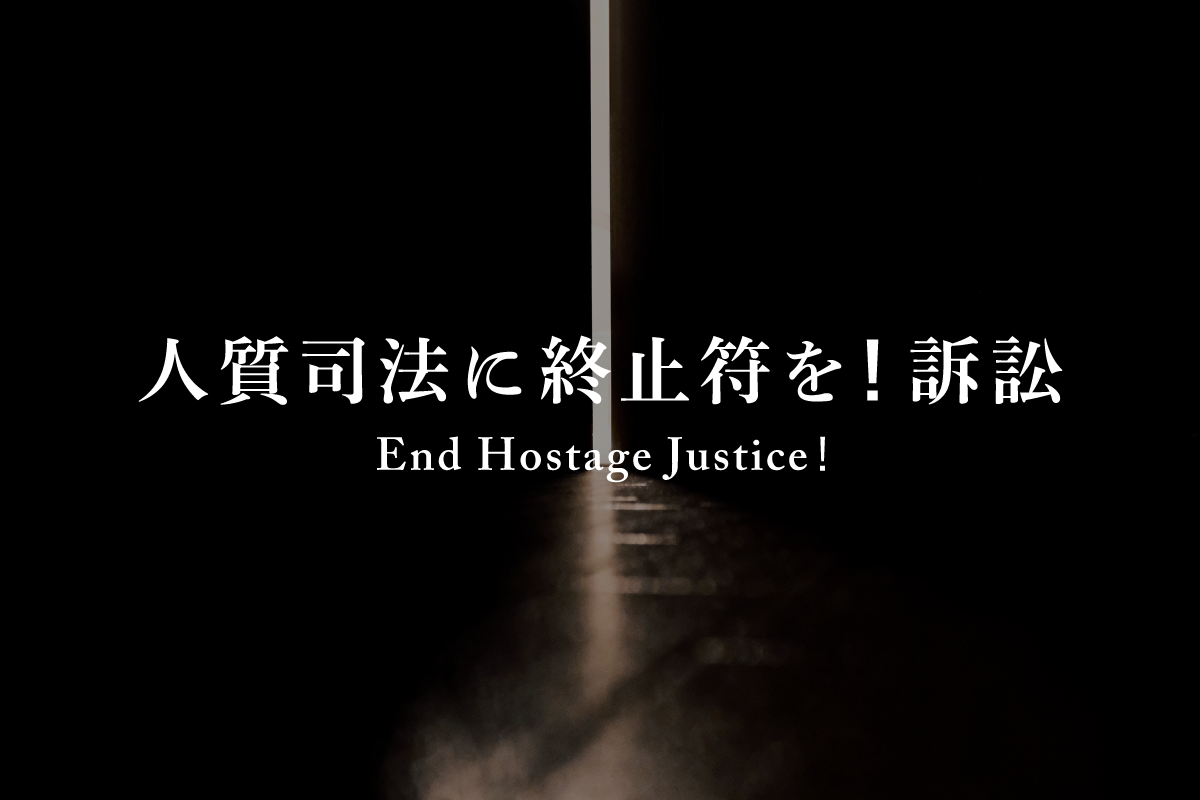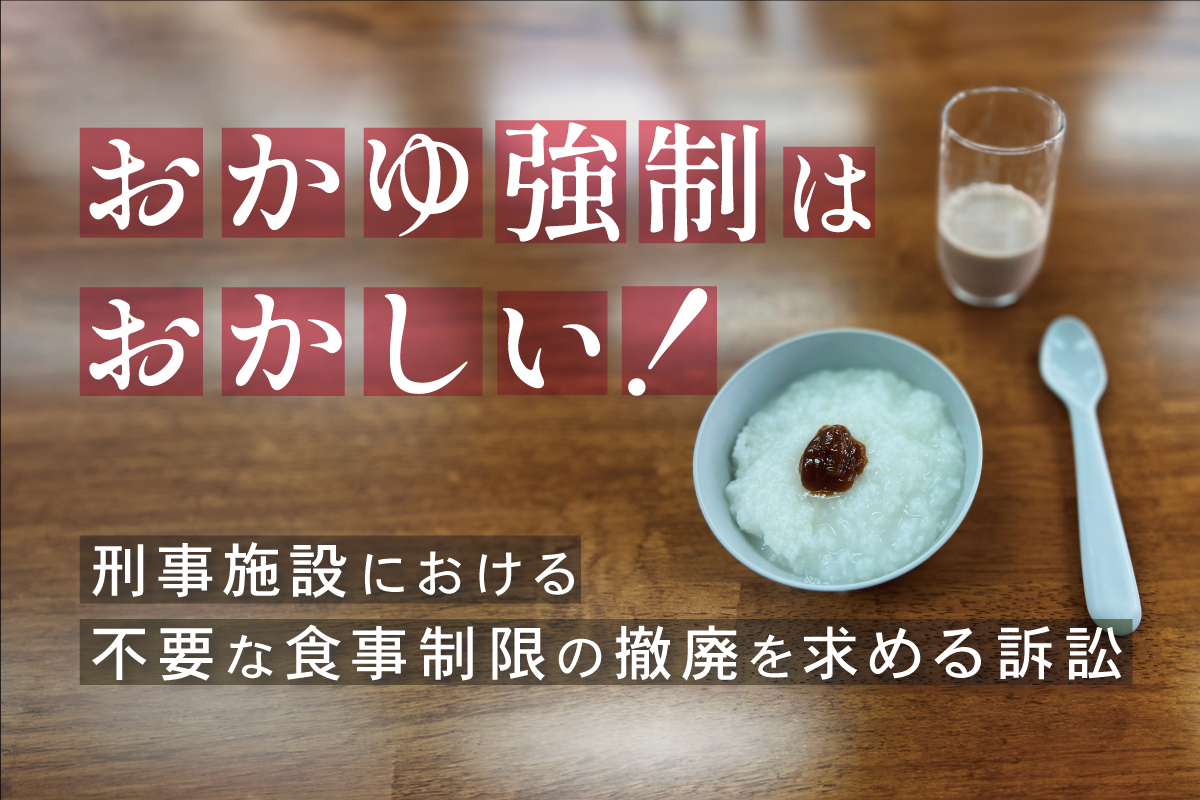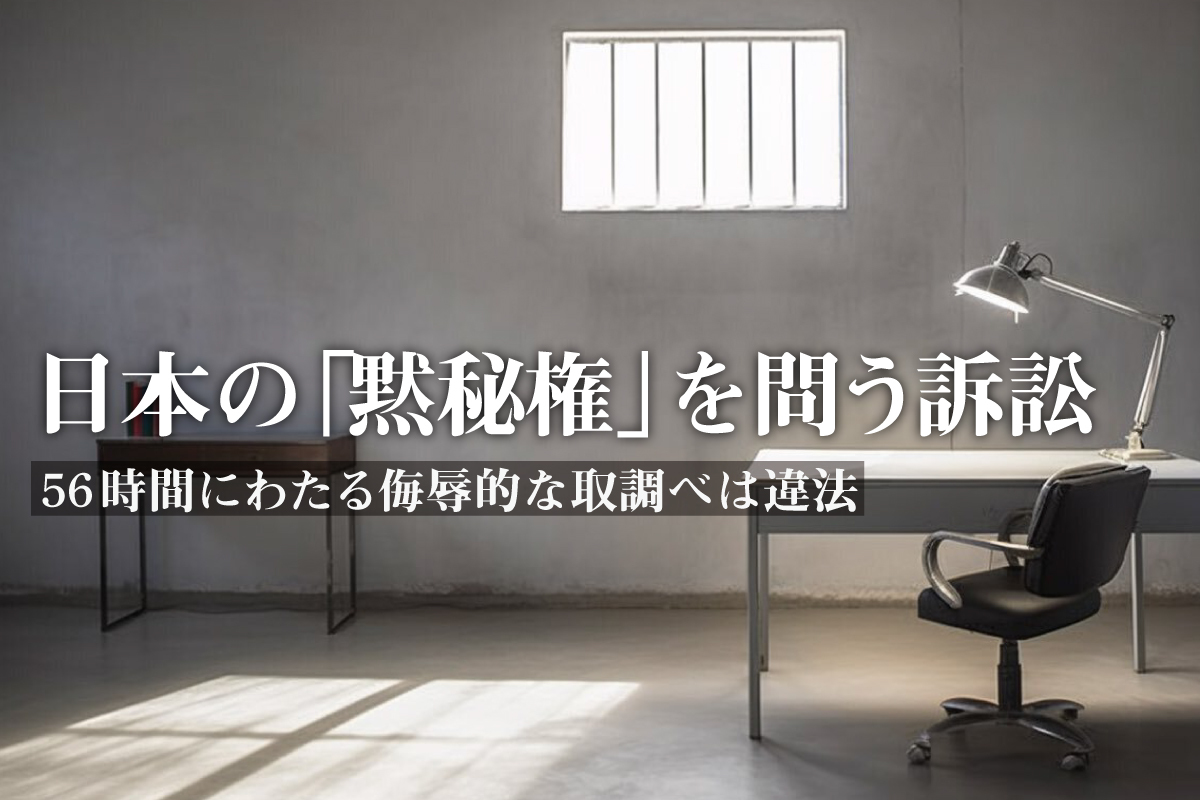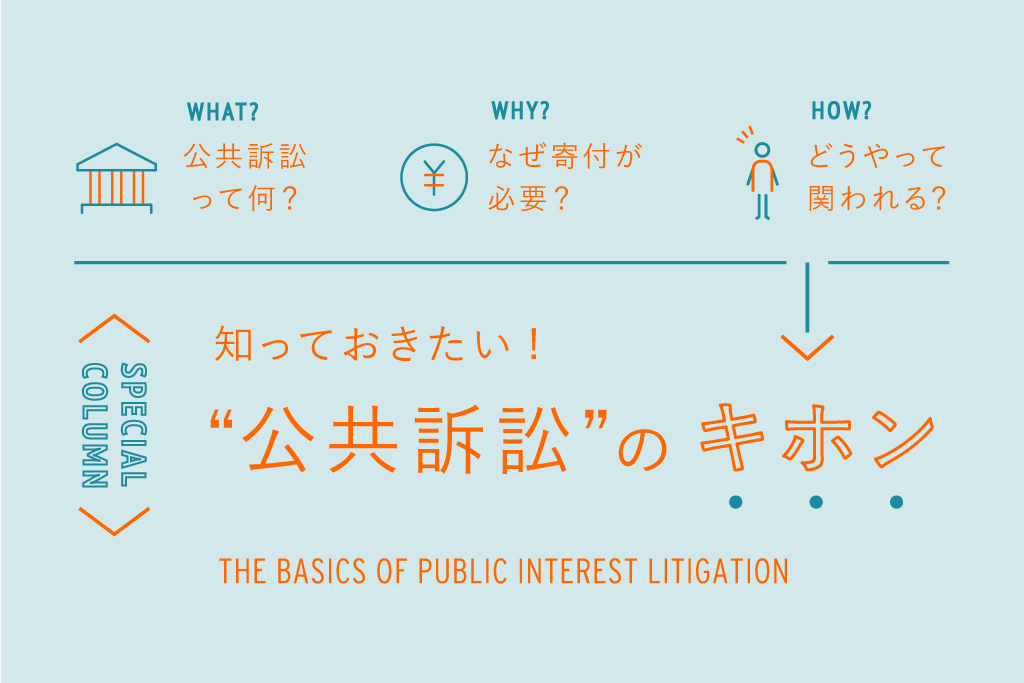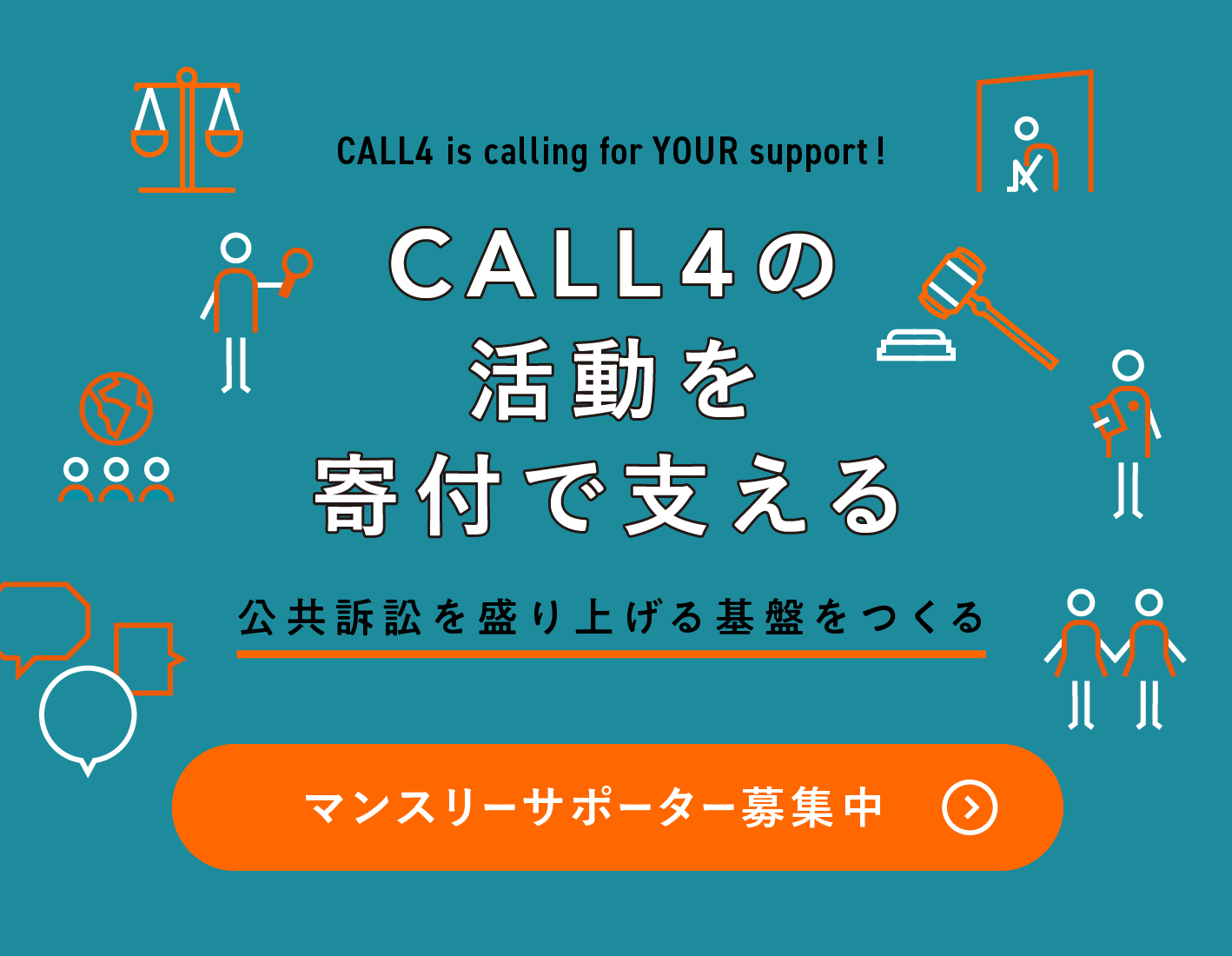新宿留置場事件 〜警察官による被収容者への違法な戒具拘束や侮辱行為を許さない〜 Police Brutality in Shinjuku Police Detention Facility
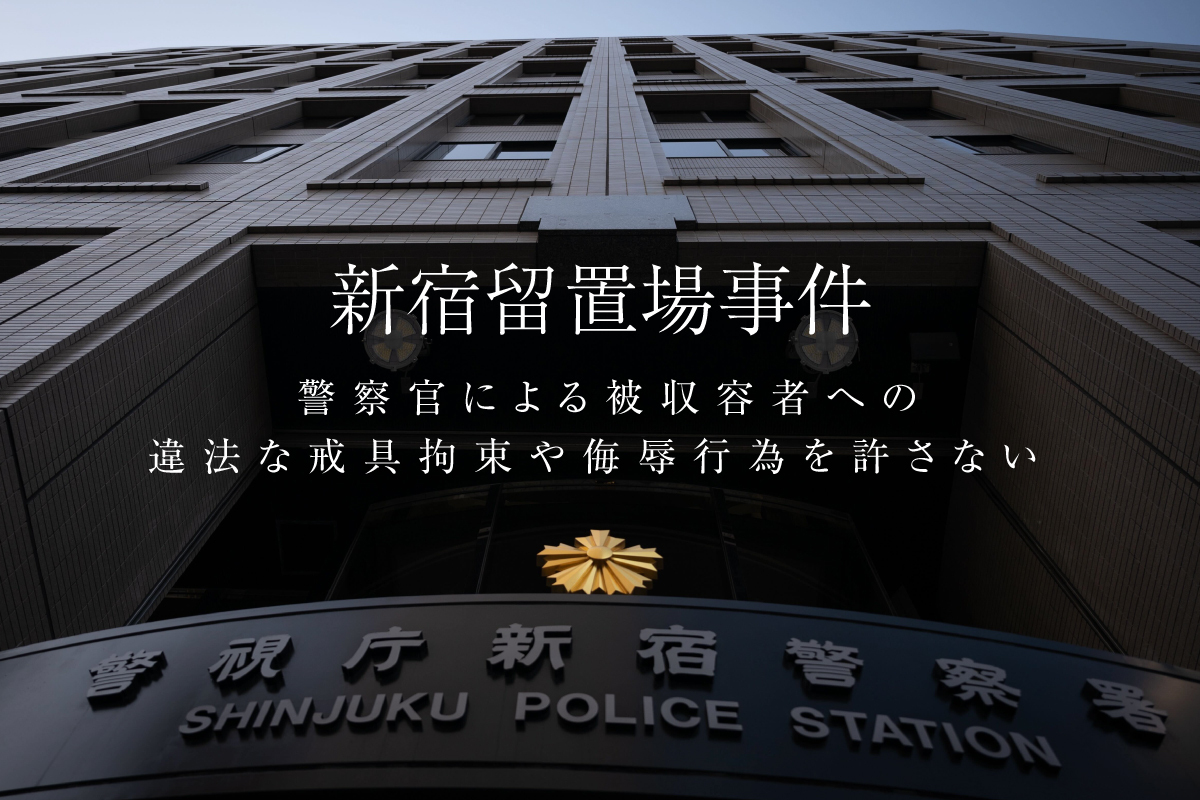
新宿警察署の留置施設に収容されていた原告(20歳代の男性)が留置担当官と議論になり、保護室に連行され、パンツ一丁にされ、ベルト手錠、捕縄等で身体を拘束された。原告は「垂れ流せよ。みんなそうしてるから。」と言われ、拘束され寝転がされた状態で、パンツをはいたまま排泄させられた。このように保護室+拘束をセットにしての虐待がルーティンとして行われている、新宿警察署の取り扱いに対する国賠請求事件です。 The plaintiff who was detained in the detention facility of the Shinjuku Police Station had an argument with the detention officer, and was taken to the protection room, made into a pair of pants, and restrained with belts, handcuffs, arresting ropes, etc. The plaintiff was told to ”Soil yourself, because everyone is doing it” and was forced to excrete wearing underpants while he was being restrained and laid down. This is a national compensation claim case against the handling of Shinjuku Police Station, where abuse is routinely performed in a set of protection room + restraint.
* 2024年10月19日追記
皆様のおかげさまで目標額を達成することができました。心強いご支援誠にありがとうございます。
本件では、裁判官に本件の酷さを理解してもらうために、原告本人を拘束するのに使われた「戒具」のレプリカを作成したいと考えています。レプリカ作成には数十万円かかる見込みです。そのため、ネクストゴールとして、+30万円を設定させていただきました。引き続きのご支援、何卒よろしくお願いいたします。
はじめに
もしあなたが、下着一枚の姿で拘束され、トイレに行かせてもらえず、さらには「垂れ流せよ」と言われたとしたら。その苦痛はどれほどのものでしょうか。これは2022年7月、新宿警察署の留置施設で実際に起こった事件なのです。
裁判による有罪判決を経て収容される刑務所とは異なり、留置施設に収容されているのは、無罪が推定されている市民です。また、実際に罪を犯しているかどうかにかかわらず、「法律に定められた手続きによらず懲罰を受けない」という権利は誰にでも認められます。
「留置施設って犯罪を犯した人が入るところじゃないの?」「自分は犯罪を犯さないから関係ない」と、どこか遠いものに感じるかもしれません。
しかし、無実の罪で逮捕されてしまうということは、あなた自身、あるいはあなたの大切な人にも起こりうることですし、犯罪を犯した人であっても、その処罰に適正な手続きが取られることは、日本の人権保障のレベルを担保するものであると言えます。
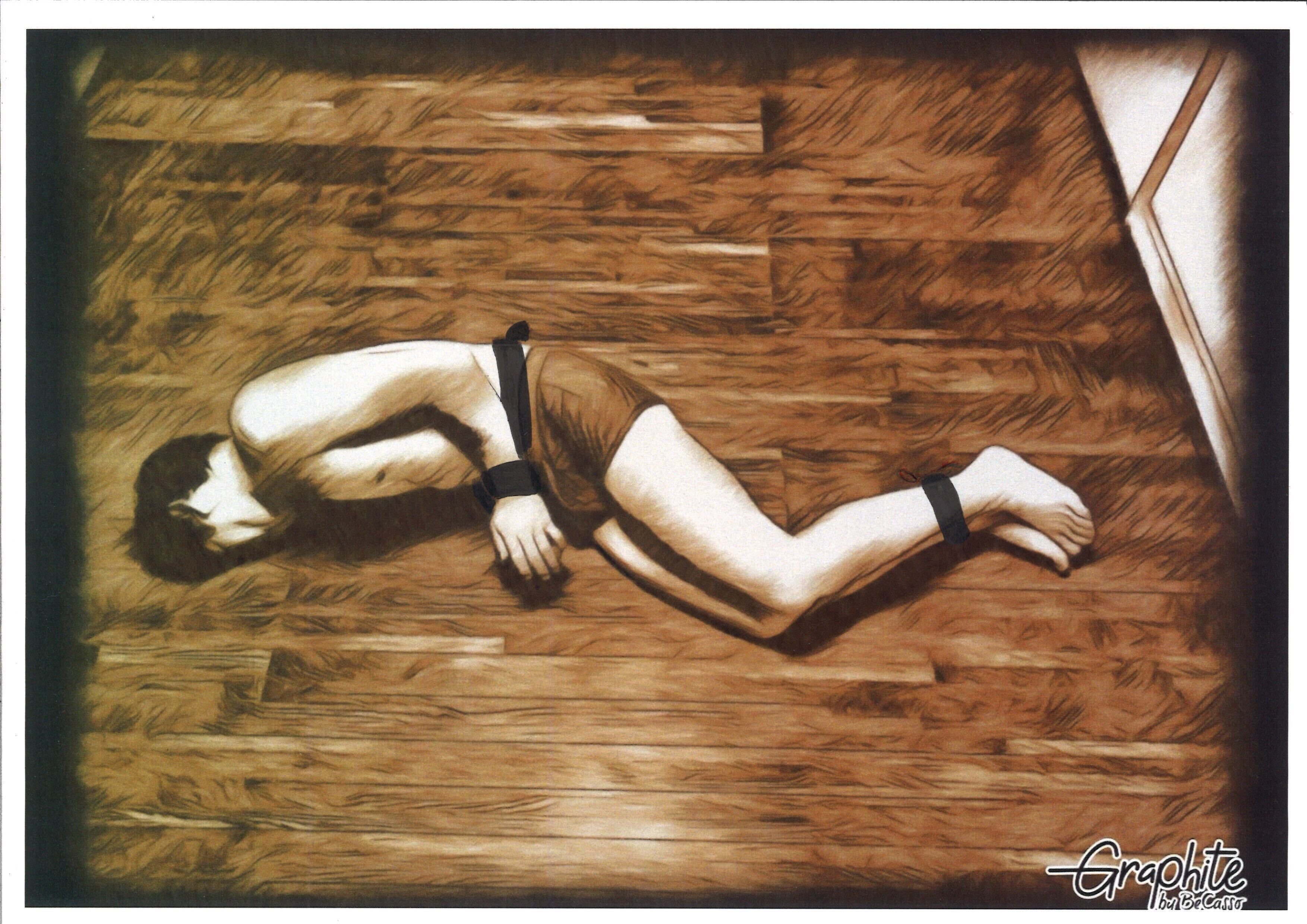
▲Aさんが保護室で下着1枚で拘束された様子の再現イラスト(小竹弁護士作成)
事件の概要
原告であるAさんが上記のような扱いを受け、提訴に至るまでの過程はどのようなものだったのでしょうか。
保護室に収容されるまで
Aさんは、新宿警察署の留置場に収容されていた20代の男性です。
留置場では、雑居と言われる共同居室に収容されるのですが、収容中、Aさんの同室者の一人が体調を崩し、高熱まで出してしまいました。
見かねたAさんは、職員に対して、「同室者に毛布を使わせてあげてほしい」とお願いしましたが、職員は、「それはできない」と毛布の差し入れを拒否しました。
これに対してAさんが、「なぜ毛布を使わせてあげられないのですか」と、重ねて尋ねたところ、職員は、Aさんをまる二日間もの間、「保護室」と呼ばれる部屋に収容したのです。
この保護室というのは、留置場に収容されている人が、暴れるなどして、他の人や自分自身を傷つけてしまうことを防止するための部屋です。非常に簡素で狭い空間になっていて、トイレもただの穴がそこにあるだけで、排せつ後に流すこともできない作りです。
戒具での拘束・侮辱的言動
Aさんはこのような保護室に収容されただけでなく、パンツ一枚の姿で、両手をベルトできつく縛られ、その手を腰に、捕縄(ほじょう)と呼ばれるものでくくりつけられていました。
このベルトや捕縄といった、戒具(かいぐ)と呼ばれる道具を使われたことによってAさんは両手首や腰に血がにじむほどの傷を負い、一か月経っても右手の一部がしびれて皮膚の感覚がないような状態でした。
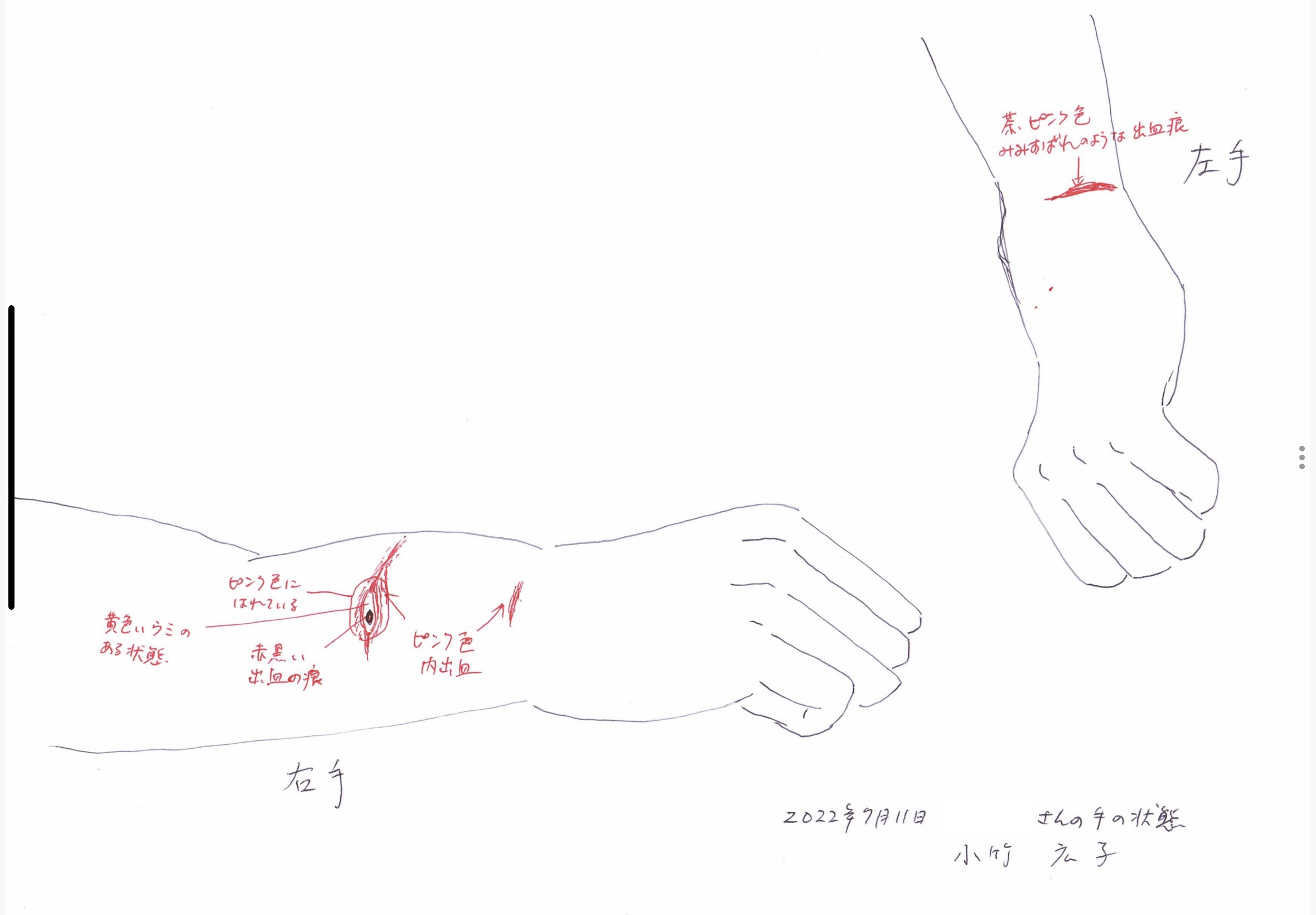
▲Aさんの手首に残された怪我の後のイラスト(小竹弁護士作成)
さらに、両手を腰に縛り付けられていてそのままではトイレに行けなかったため、職員に「トイレに行きたい」と伝えたところ、職員から「その状態で垂れ流せ」といわれ、そのまま排泄させられたのです。大便をした際にも、紙を使わせてもらえず、手で拭かざるを得ませんでした。
問題の所在
ここで問題となるのは、①要件を満たしていないにもかかわらず行われた保護室への収容、②戒具拘束、③侮辱的言動、さらに、④新宿署の人為ミスにより①から③の責任を問う上で必要であった証拠保全ができなかったこと、上記4点です。
①保護室への収容
保護室への収容の要件は、自傷又は他人への危害、設備等の損壊のおそれがある場合や、制止に従わず大声や騒音を発する場合に限られています。
Aさんは、同室者の健康を気遣い、毛布の差し入れを求めたに過ぎません。しかも、終始敬語を使って留置担当官に要望をしたに過ぎず、保護室への収容ができる要件を満たしていませんでした。
②戒具の使用
また、被留置者への戒具使用の要件も、逃走、自傷又は他人への危害、設備等の損壊のおそれがある場合に限られています。
しかし、Aさんは、留置担当者の指示に従って保護室に移動しており、上記のおそれがない状態で戒具が使用されたのです。
今回のような、要件を満たさずに行われる保護室への収容や戒具の使用は、まさに恣意的な運用であり、身体への制限にあたり要件が設けられている趣旨に反する行為であると言えます。
③侮辱的言動
上記の行為自体が要件を満たさずに行われたものであり問題となりますが、上記の行為に伴い、侮辱的言動が用いられたことも問題となります。「垂れ流せよ」などといった侮辱的言動は、許されるものではありません。
④証拠保全手続
これら①から③の行為が行われたことの証拠となるのが、留置施設内を撮影した録画映像です。
民事訴訟においては、相手方が証拠を持っている際に、証拠隠滅や改ざんが起こらないよう、裁判所が命令を出して証拠を保全する、証拠保全という手続きがあります。
本訴訟において、留置施設内を撮影した録画映像の証拠保全手続きが行われましたが、「録画機器を一時停止にしたままにしていた」という新宿署の人為ミスにより、録画映像が存在せず、証拠保全期日は「検証不能」として終了してしまいました。
社会的意義
法律の規定に反する「制裁」を許さない
このように、今回の事件では、新宿警察署の職員が「反抗的」とみなした被留置者に対して懲罰的に保護室や戒具を使用するなどの「制裁」を行っており、これは明らかに法律の規定に反しているといえます。
そもそも留置施設に収容されている人々は有罪判決を受けたわけではなく、職員は、証拠隠滅、逃亡や自傷防止のための最低限の実力行使が認められているにすぎません。
また、もし仮に本当に罪を犯していたとしても、刑罰は裁判の手続きを経たうえで課されるものであり、留置施設が制裁を行う権限は全く認められません。
この事件で職員が被留置者の管理のために戒具を使用した背後には、被留置者は犯罪者であり何をしてもよいのだという意識、あるいはそれに同調する組織の体質が存在している可能性があり、もしそうだとすれば、それは誤った認識であり断じて容認できるものではありません。
刑事司法に対する市民の理解を深める
この訴訟を通して、「被留置者は犯罪者だ」「犯罪者は酷い目にあわされていい」という発想は間違ったものであり、法律に定められた手続きによらずに懲罰を行うことは憲法違反であるということを皆さんに知ってほしいと思っています。
また、警察署の留置施設が拘置所の代わりに使われているという代用監獄問題がこの問題の背景にはあり、被留置者はもちろん、少数で管理しなければならない職員の側も多大なストレスにさらされているという制度的・構造的な問題が事件の背景に潜んでいるということも是非知っていただければと思います。
原告の思い
Aさんは、保護室から出された後、他の収容者も同じような扱いを受けたことがあることや、新宿警察署で戒具で縛られ、その後死亡したアルジュンさんの事件の話を聞きました。
そこで、何か行動しなければ今後も同じようなことが起こり続けるのだと気がつき、「同じような思いをする人をなくしたい」との思いから、提訴をすることを決めました。
弁護団からのコメント
Aさんの受けた扱いを聞いた時、そのあまりの酷さに憤りを感じました。また、2017年には同じ新宿警察署で保護室と戒具を使用された人が死亡する事件が起きています。何も変わらない新宿警察署の体制に危機感を抱いています。
留置施設に収容されている人は、言葉や表現する方法を持ちにくく、個々人が分断されているため、権利侵害の回復が困難です。留置施設の世界を知っている弁護士として、声なき声を裁判所や社会に届けるような仕事が出来たら嬉しいです。
担当弁護士
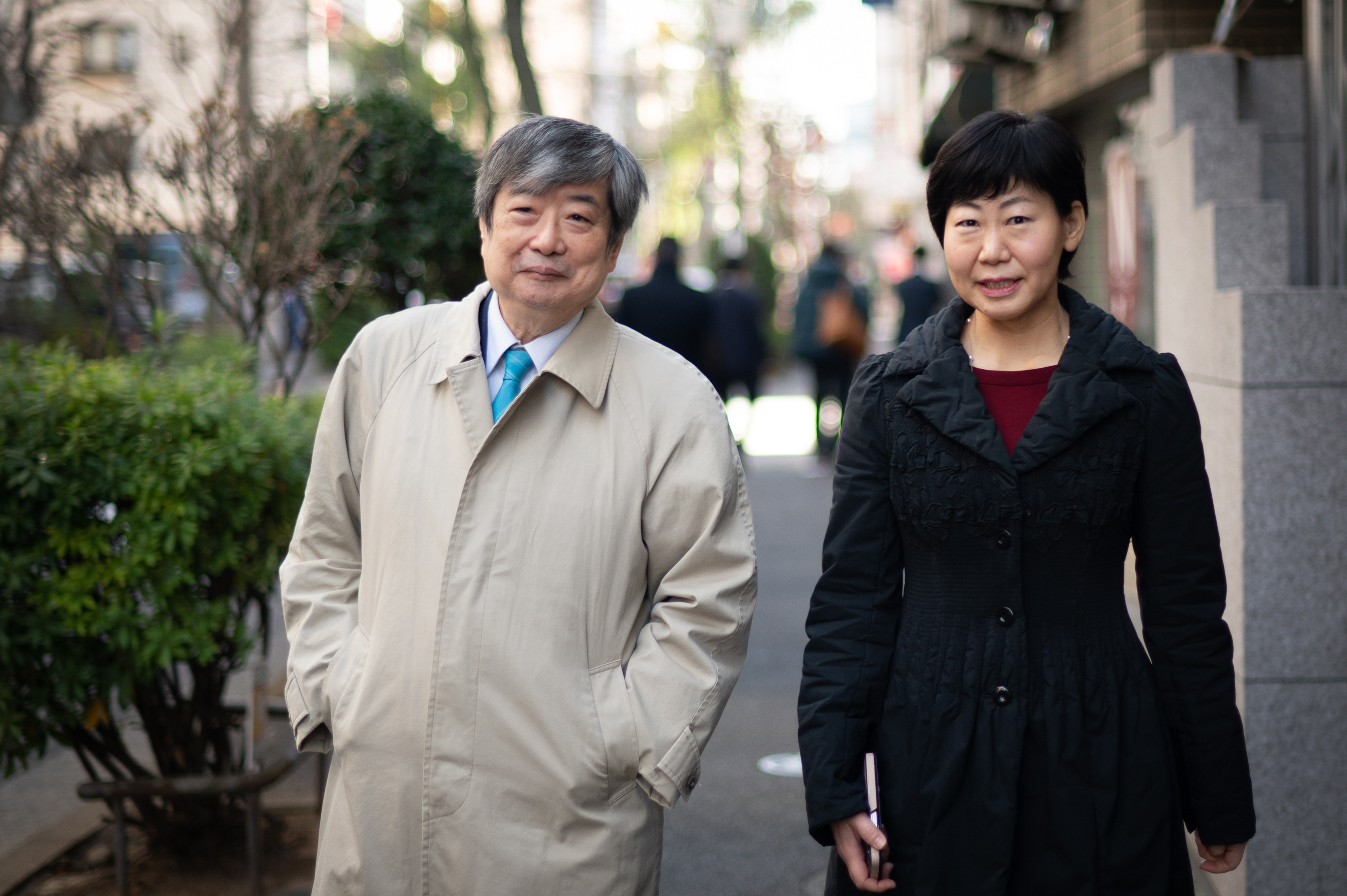
▲左から、弁護団の海渡雄一弁護士、小竹広子弁護士(photo by 穐吉洋子 )
海渡雄一(第二東京弁護士会・東京共同法律事務所)
小竹広子(第二東京弁護士会・東京共同法律事務所)
木村壮(第二東京弁護士会・東京共同法律事務所)
阿部通子(第二東京弁護士会・八雲法律事務所)
寄付金の使途
① 訴訟提起のための必要経費(印紙・郵便切手等) 約3万円
② 証人等の交通費
③ 意見書費用 約20万円
④ 弁護士費用 約20万円
⑤ その他(訴訟に関連するもの) 印刷代等実費 約7万円
※仮に寄付金が余った場合には、第二東京弁護士会人権救済基金に寄付させていただきます。
寄付のお願い
刑事施設を見れば、その国の文化水準がわかると言います。日本の人権レベルを担保するこの重要な訴訟を、少額ずつで結構ですので、みなさんの寄付で支えてくださらないでしょうか。
* Updated on October 19, 2024
Thanks to everyone, we were able to reach our goal. Thank you very much for your encouraging support.
In this case, we would like to create a replica of the "restraint device" used to restrain the plaintiff himself so that the judge can understand the severity of this case. It is expected that creating a replica will cost hundreds of thousands of yen. Therefore, we have set an additional 300,000 yen as our next goal. We would appreciate your continued support.
Introduction
Imagine being detained in only your underwear, not being allowed to go to the toilet, and even being told to "spit" inside. How painful would that be? This is an actual incident that occurred in July 2022 at the Shinjuku Police Station detention facility.
Unlike prisons, where people are detained after being found guilty in a trial, detention facilities are for citizens who are presumed innocent. In addition, everyone has the right not to be punished without due process of law, regardless of whether they have actually committed a crime or not.
You may feel that detention facilities are places where people who have committed crimes go, or that it doesn't concern you because you don't commit crimes.
However, being arrested for a crime you did not commit could happen to you or someone you love, and the fact that due process is followed in the punishment of those who have committed a crime is a guarantee of the level of human rights protection in Japan.

▲ A re-enactment of the scene where Ms. A was restrained in the protective room wearing only her underwear (created by Attorney Otake)
Summary of the incident
What was the process that led to the plaintiff, Mr. A, being treated as described above and filing the lawsuit?
Until being placed in a protective room
Mr. A is a man in his 20s who was being held in the Shinjuku Police Station's detention cell.
In the detention center, inmates are held in shared rooms known as "municipal rooms." While in detention, one of Mr. A's roommates fell ill and even developed a high fever.
Unable to bear the situation any longer, Mr. A asked the staff to let his roommate use the blanket, but the staff member refused, saying that it was not possible.
In response, Mr. A asked again, "Why can't I use a blanket?" and the staff placed Mr. A in a room called a "protective room" for two whole days.
This protective room is a room to prevent people in custody from becoming violent and hurting themselves or others. It is a very simple and narrow space, and the toilet is just a hole, so you can't even flush it after using it.
Restraints using restraining devices and insulting behavior
Not only was Mr. A placed in this protective room, he was also wearing only his underwear, his hands were tightly bound with a belt, and his hands were tied around his waist with what is called a hojo (a rope).
The use of these belts and ropes, known as kaigu (restraints), left Mr. A with wounds on both his wrists and waist that bled, and even after a month, part of his right hand was numb and he had no feeling in the skin.

▲Illustration of the injury left on Mr. A's wrist (created by Attorney Otake)
Furthermore, because her hands were tied around her waist, she was unable to go to the toilet, so when she told the staff that she wanted to go to the toilet, they told her to just let it all out like that, and made her defecate like that. When she had to defecate, she was not allowed to use paper, and had to wipe it with her hands.
Where is the problem?
The four issues at issue here are: 1) placement in a protective room despite the requirements not being met, 2) restraint with restraining implements, 3) insulting behavior, and 4) the failure to preserve evidence necessary to hold those responsible for 1) through 3) responsible due to human error on the part of Shinjuku Police Station.
1) Placement in a protective room
Requirements for placing a person in a protective room are limited to cases where there is a risk of self-harm or harm to others, or damage to facilities, or where the person refuses to comply with restraints and shouts or makes noise.
Mr. A was concerned about the health of his cellmate and simply asked for a blanket. Moreover, he only made his request to the detention officer using polite language throughout, which did not meet the requirements for being placed in a protective room.
② Use of discipline implements
In addition, the requirement to use restraining devices on detainees is limited to cases where there is a risk of escape, self-injury or harm to others, or damage to facilities, etc.
However, Mr. A was moved to a protective room in accordance with the instructions of the detention officer, and the restraining devices were used without any of the above-mentioned risks.
The confinement of a person to a protective room and the use of restraining devices without meeting the requirements, as in this case, are completely arbitrary and can be said to go against the purpose of the requirements that are in place for physical restrictions.
3) Insulting behavior
The above acts themselves do not meet the requirements and are problematic, but the use of insulting language in conjunction with the above acts is also problematic. Insulting language such as "let it all flow" is not acceptable.
④ Evidence preservation procedures
The evidence that acts ① to ③ were committed is the video footage taken inside the detention facility.
In civil litigation, when the other party has evidence, there is a procedure called evidence preservation , where the court issues an order to preserve the evidence to prevent it from being destroyed or altered.
In this lawsuit, procedures were carried out to preserve evidence of recorded footage taken inside the detention facility, but due to a human error by Shinjuku Police Station in which the recording equipment was left paused, no recorded footage existed and the evidence preservation date ended with the evidence being deemed "unverifiable."
Social significance
We will not tolerate "sanctions" that violate legal provisions.
In this way, in this case, Shinjuku Police Station officials imposed punitive "sanctions" on detainees they deemed to be "rebellious," such as using protective rooms and restraining devices, which is clearly in violation of the provisions of the law.
In the first place, people held in detention facilities have not been convicted of any crimes, and staff are only authorized to use minimal force to destroy evidence or prevent escape or self-harm.
Furthermore, even if a person has indeed committed a crime, punishment will be imposed after going through a judicial process, and the detention facility has no authority to impose sanctions whatsoever.
In this case, behind the staff member's use of restraining devices to control the detainee may be the belief that detainees are criminals and can do whatever they want, or the organizational nature of the organization may be in agreement with this.If this is the case, it is a mistaken perception and absolutely unacceptable.
Improving public understanding of criminal justice
Through this lawsuit, I hope to make everyone aware that the idea that "detainees are criminals" and "criminals deserve to be treated badly" is wrong, and that punishing someone without following procedures established by law is a violation of the Constitution.
Additionally, I would like people to know that the background to this issue lies in the problem of substitute prisons, where police station detention facilities are being used instead of prisons, and that there are institutional and structural problems underlying the incident, in which not only the detainees but also the small number of staff members who have to manage them are subjected to enormous stress.
Plaintiff’s thoughts
After being released from the protective room, Mr. A heard about other inmates who had been treated similarly, and about the case of Arjun, who was shackled with restraining devices at Shinjuku Police Station and later died.
I realized that if I didn't take some kind of action, similar things would continue to happen in the future, and with the desire to "prevent anyone else from having to go through the same thing," I decided to file a lawsuit.
Comments from the defense team
When I heard about the way A-san was treated, I was outraged by how cruel it was. In 2017, there was also an incident at the same Shinjuku Police Station where a person who was placed in a protective room and restraining devices died. I feel a sense of crisis about the system at Shinjuku Police Station, which has not changed at all.
People held in detention facilities have little ability to express themselves, and are isolated from one another, making it difficult for them to recover from the infringement of their rights. As a lawyer who knows the world of detention facilities, I would be happy to do work that helps bring the voiceless voices to the courts and society.
Attorney in charge

▲From the left, lawyers Yuichi Umidori and Hiroko Otake (photo by Yoko Akiyoshi)
Yuichi Kaito (Tokyo Bar Association and Tokyo Joint Law Office)
Hiroko Odake (Tokyo Bar Association, Tokyo Joint Law Office)
Takeshi Kimura (Tokyo Bar Association, Tokyo Joint Law Office)
Michiko Abe (Second Tokyo Bar Association, Yakumo Law Office)
How donations will be used
① Necessary expenses for filing a lawsuit (stamps, postage stamps, etc.) Approximately 30,000 yen ② Transportation expenses for witnesses, etc. ③ Fees for written opinion Approximately 200,000 yen ④ Attorney's fees Approximately 200,000 yen ⑤ Other (related to the lawsuit) Actual expenses such as printing costs Approximately 70,000 yen
*If there are any surplus donations, we will donate them to the Tokyo Bar Association Human Rights Relief Fund.
Donation Request
It is said that you can gauge a country's cultural level by looking at its penal institutions. Please support this important lawsuit, which will ensure the level of human rights in Japan, with your donations, no matter how small, so please make a donation.
ある医師の言葉で「病が治るとは、病が無かった頃に戻るのではなく、病を超えてその先に行くことだ」というのがありますが、法律問題の解決も同様に、その問題が無かったところに戻るのではなく、ひとつの過程を経てその先へ人生を進めることです。法律的な観点だけからではなく、全体として良い方向に向かう転換点にするためのサポートができたら良いなと考えています。
(経歴等)
2001年より母親業
2008年 弁護士登録
2009年 産業カウンセラー資格取得
2010年 家族相談士資格取得
2015年 ゲシュタルト療法トレーニングコース修了
2015年 条件反射制御法実地研修中級課程修了
2016年 保護司登録
(所属弁護団)
日本労働弁護団
医療問題弁護団
外国人研修生問題弁護士連絡会
ホームレス法的支援ネットワーク
(所属委員会)
日弁連 刑事拘禁制度改革実現本部
日弁連 死刑廃止及び関連する刑罰制度改革実現本部
第二東京弁護士会 刑事法制・刑事被拘禁者の権利に関する委員会 委員長
第二東京弁護士会 子どもの権利委員会
(所属学会等)
日本ゲシュタルト療法学会
日本産業カウンセラー協会
日本家族カウンセリング協会
条件反射制御法学会
あなたにおすすめのケース Recommended case for you
- 外国にルーツを持つ人々 Immigrants/Refugees/Foreign residents in Japan
- ジェンダー・セクシュアリティ Gender/Sexuality
- 医療・福祉・障がい Healthcare/Welfare/Disability
- 働き方 Labor Rights
- 刑事司法 Criminal Justice
- 公正な手続 Procedural Justice
- 情報公開 Information Disclosure
- 政治参加・表現の自由 Democracy/Freedom of Expression
- 環境・災害 Environment/Natural Disasters
- 沖縄 Okinawa
- 個人情報・プライバシー Personal information/Privacy
- アーカイブ Archive
- 全てのケース ALL
